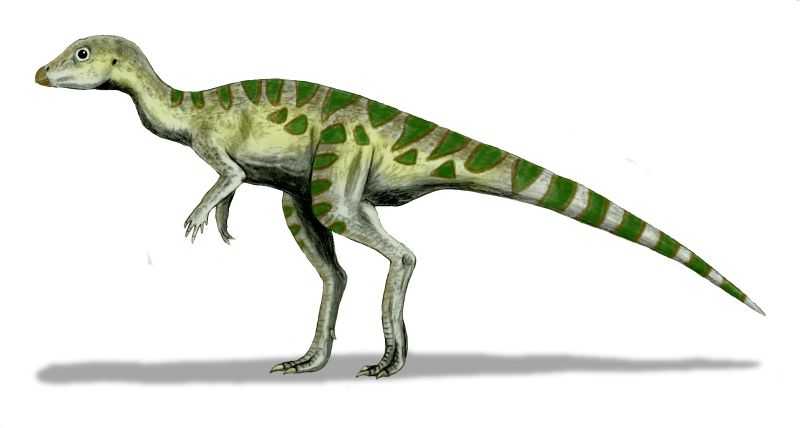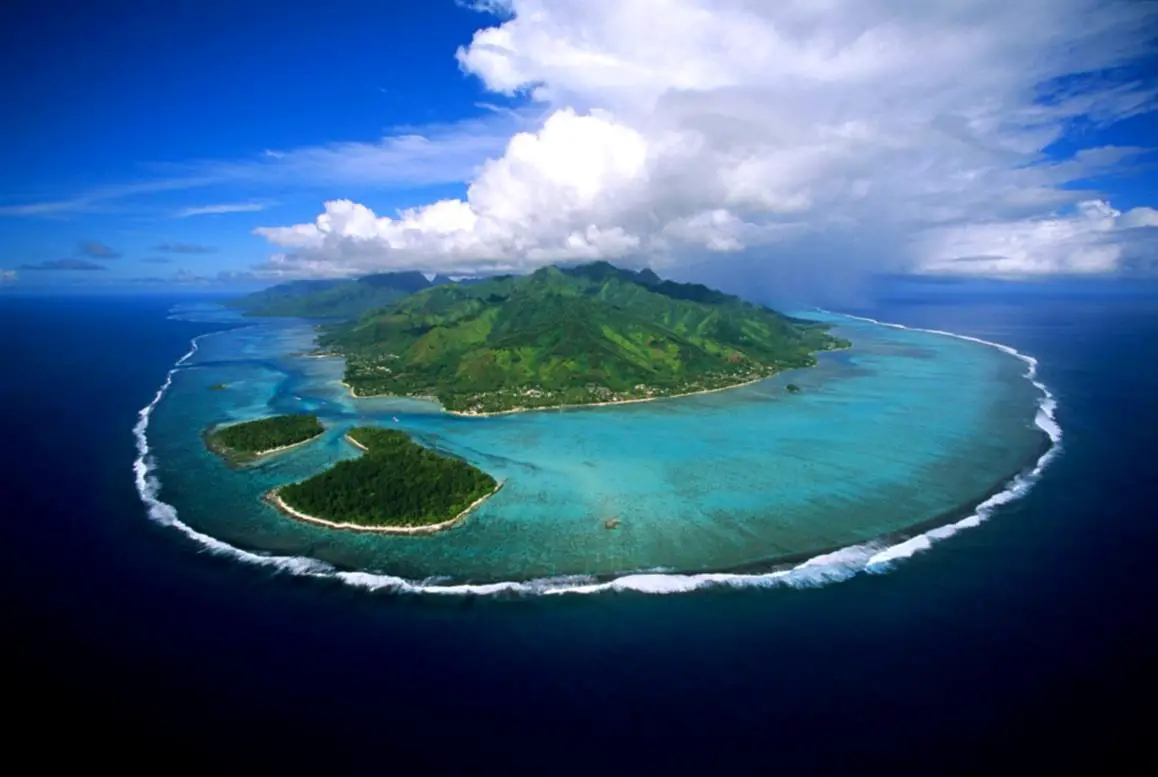 In short
In short
Australia has mines of gold, opal, diamonds and other valuables. But not that many know that Australia has also a true mine of dinosaurs – Dinosaur Cove. Just like in other mines, here is done blasting, made tunnels, removed and sieved many tons of rock in search of values – and here the values are petrified bones of extinct reptiles.
 44.3%
44.3%
GPS coordinates
Location, address
Geologic time
Finds
Map of the site
If you see this after your page is loaded completely, leafletJS files are missing.
 In detail
In detail
This mine has provided valuable information about especially persistent breed of ancient reptiles – Australian polar dinosaurs.
Seaside cliffs with dinosaur bones
First petrified bones of dinosaurs were found in rocky outcrops at the beach west from Inverloch, some 200 km to the east from Dinosaur Cove. This discovery was made in 1905.
Dinosaur Cove was discovered 75 years later – on 13 December 1980. Back then a group of enthusiasts was searching remnants of dinosaurs along the beaches of Victoria already for several years. They had some success – there were made some scattered, interesting findings. But a site in a small cove west from Glenaire was exceptionally rich with remnants of ancient reptiles. On the evening of discovery day, it got named – Dinosaur Cove.

Dinosaur mine
Unfortunately further enthusiasm was stifled by a quick assessment of chances to get the bones out of cliffs: fossils were concentrated in a narrow strip in up to 0.3 m thick layer. This layer was at the base of the cliff, up to 90 m high and consisting for the most part, of hard rocks. The narrow strip was directed inside the cliff. Even access to this site was risky.
Thus researchers decided to look for some other dinosaur site that would be easier to mine. For some years – until 1984 – Dinosaur Cove was silent but this rich find of unknown beings was not forgotten. A large group of volunteers, some miners, and paleontologists led by Patricia Vickers-Rich and Thomas H.Rich made a desperate attempt to cut through the hard rock. Over 16 days they managed to carve through some tons of rocks. This hard work paid off – there were found 80 dinosaur bones.
Since then there was started real mining of dinosaurs. Works are ongoing nearly every summer, numerous volunteers and heavy equipment are involved. 1 kg of fossil-bearing rock requires the removal of approximately 30 kg of hard rock above it. Work is permanently led by Patricia Vickers-Rich and Thomas Rich.
Geological records of Gondwana times
The valuable fossil finds here are confined to the sandstone of the Lower Cretaceous period, they are 100 – 110 million years old.
The enormous southern continent – Gondwana – was breaking up at this time. Australia still was united with Antarctica but there was forming a rift valley already. Present-day Dinosaur Cove most likely was a small stream that collected bones of smaller animals and covered them with silt.
Later these deposits went below sea level and were overlaid with later sediments. As time went by, sediments were petrified and over the last 30 million years are lifted above sea level again.
Dinosaurs in polar night
Present-day Dinosaur Cove was inside the Antarctic circle and this was the first location where polar dinosaurs were discovered. Although the climate back then was warmer than today, dinosaurs living here knew quite well what is snow, ice, and polar nights.
This has led to theories that these reptiles developed such adaptations as good night vision and that they were even warm-blooded. This has pushed the imagination of some specialists even further – maybe the specific adaptations of Australian dinosaurs that allowed them to survive the Cretaceous-Tertiary extinction event? Thus far no evidence for this has been found but the search is on.
Herbivorous dinosaurs of Dinosaur Cove
Several new species have been discovered in Dinosaur Cove, including:
- Leaellynasaura amicagraphica was discovered in 1989 and is named after Riche’s daughter Leaellyn. Leaellynasaura was small, up to 90 cm long reptile with comparatively large eyes – most likely accustomed to life during the polar night.
- Timimus hermani has been desribed after two upper leg bones in 1993. This dinosaur is named after Riches’ son Tim. This reptile lived 106 million years ago and, according to hypothesis of Anusuya Chinsamy, possibly hibernated during the colder winter months.
- Atlascopcosaurus loadsi Rich & Vickers-Rich, 1989 – named after Atlas Copco Company – provider of equipment which was essential in finding the fossils. This quick reptile was 2 – 3 m long, weighing approximately 125 kg, lived during the early Cretaceous.
First southern Tyrannosaur
Before March 2010 it was considered that tyrannosaurs evolved and lived in the northern hemisphere. History of geology, for the most part, has been made in Northern Hemisphere and dinosaurs were no exception – first and most finds took place in the north – in North America, China, Mongolia, Kazakhstan, and elsewhere. Over the last decades, the situation changed though – more and more finds were made in the southern hemisphere, most "northern" dinosaurs were found in the south as well.
Tyrannosauridae though was one of exceptions thus far. This family of ancient reptiles is much sought and well researched due to a comparatively good state of conservation and – also their fame in popular culture.
In March 2010 international group of scientists announced a find of the very first tyrannosaur in the Southern hemisphere – this discovery was made in Dinosaur Cove. Here was found some 30 cm long hip bone, belonging to an ancestor of Tyrannosaurus rex.
Tyrannosaur of Dinosaur Cove was approximately 3 m long, weighing some 80 kg, and possibly had the large head and small arms characteristic for these reptiles. Thus it was considerably smaller than the famous 13 meters long Tyrannosaurus rex weighing up to 7 tonnes. But Australian reptile lived 110 million years ago, while Tyrannosaurus rex lived "only" 70 million years ago.
Find of Dinosaur Cove belongs to early tyrannosaurs and currently is far away from the other known finds of these carnivorous dinosaurs. This hints at possible future discoveries of these ancient reptiles in Africa, South America, and India.
References
- Thomas H. Rich, The Discovery of Dinosaur Cove. A History of Museum Victoria. Accessed 29.03.10.
- First Ever Southern Tyrannosaur Dinosaur Discovered. ScienceDaily, 26 March 2010. Accessed 29.03.10.
- Diggers at Dinosaur Cove: Not all dinosaurs lived in hot, lush surroundings. Archaeologists in Australia are discovering remains that challenge ideas about the way the giant reptiles lived and died. 13 February 1993 by Ian Anderson. Accessed 29.03.10.
 Linked articles
Linked articles

Wonders of Australia
The enormous and diverse area of Australia contains countless amazing and unique monuments. Parts of the country have not been thoroughly investigated and sometimes there are reported new, surprising finds.

Wonders of Australia and Oceania
The word “exotic” definitely refers to Australia and Oceania. Here are located many unique and mysterious landmarks, many places here deserve to be called – “One of the most beautiful places in the world”.
 Recommended books
Recommended books
Dinosaurs of Australia and New Zealand and Other Animals of the Mesozoic Era
In this first comprehensive account of Mesozoic vertebrates from New Zealand and Australia, John Long shows that, while the fossil record from the region can be sparse and fragmentary, finds from such sites as Dinosaur Cove, Coober Pedy, Lightning Ridge, and the fossil trackways at Broome offer new and occasionally startling evidence that has the potential to challenge current views. Long’s up-to-date coverage includes the discovery in late 1996 of a new shrew-like mammal, Ausktribosphenos nyktos.
Wildlife of Gondwana: Dinosaurs and Other Vertebrates from the Ancient Supercontinent
Before the six major continents were separated by vast seas, there existed the landmass of Gondwana (now Australia, South America, Antarctica, India, Africa, and New Zealand). This book presents the history of the vertebrate faunas of Gondwana, beginning with the origin of life, even before Gondwana coalesced, and moving through time as the continent shifted, along with its vertebrate life. Lavishly illustrated with hundreds of color photographs, drawings, and paintings, Wildlife of Gondwana is a major reference to the life of the past. Originally published in Australia in 1993, this corrected and augmented edition contains new material on fossil discoveries in India.


